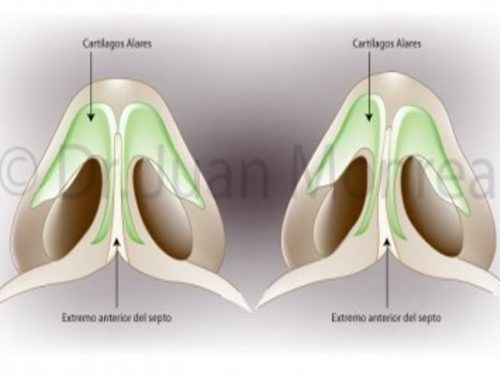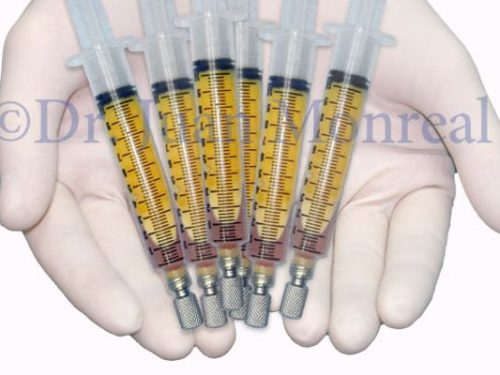Treatment of Lichen Sclerosus, Lichen Planus and Liquen Simplex Chronicus with Regenerative Cells
What it is vulvar lichen sclerosus?.

Lichen Sclerosus is an inflammatory disease characterized by the appearance of whitish and atrophic papules or plaques accompanied by itching or burning in the genital area and perianal skin. Its origin is unknown but it is known that its etiology is probably autoimmune. It can occur in both sexes, at any age and anywhere on the skin but usually manifests in the external genitalia of women between 40’s and 60´s. Continue reading if you want to learn more about vulvar lichen sclerosus and other vulvar dermatoses and how Regenerative Medicine can help.
Clinical manifestations of lichen sclerosus.
The classic manifestation of lichen sclerosus is the appearance of slowly confluent white plaques, which may affect the labia minora, labia majora, clitoral hood, vaginal introitus or perineal skin (that portion of skin between anus and vagina). Involvement can be present in the perianal area but almost never affects the vaginal canal. Patients, especially women, suffer from cyclic episodes of itching, burning or pain in the genital area. In more severe and advanced cases plaques are extremely atrophic and can cause anatomical distortion of external genitalia. With time it is not uncommon to experience slow disappearance of the labia minora, fusion or agglutination of clitorial hood and, in severe cases, the narrowing of the vaginal opening (introitus).
In men it is much more uncommon (ratio 10:1) and usually affects the glans and the inner area of the foreskin. The most common manifestations are itching and appearance of white or inflammatory plaques (on the glans or inside the foreskin) which sometimes tend to narrow the foreskin, causing adult phimosis. involvement of meatal skin (in both men and women) can cause urinary problems.
The risk of the develop genital SCC (Scamous Cell Carcinoma) in patients with Lichen Sclerosus is estimated to be 4% to 5% over a lifetime. Treatment with topical corticosteroids can improve symptoms but it is not known if well treated LS is less likely to develop malignancies.
Other forms of Vulvar Lichen.
- Lichen Simplex Chronicus. This condition is the end stage of an itch-scratch-itch cycle. Numerous irritative and infectious disorder can initiate itching (pruritus) leading to scratching or rubbing which, in turn, leads to increased itchiness. This self – perpetuating vicious circle continuous until interrupted by a correct treatment. In contrast to lichen sclerosus, lichen simplex chornicus may extend beyond the vulva, towards the groin and inner thighs, and does not cause destruction of vulvar anatomy.
- Vulvar Lichen Planus. It is a chronic inflammatory and autoimmune disease that affects the skin and its appendages (hair and nails) and can also affect vaginal and oral mucosas. It is not uncommon its coexistence with other autoimmune diseases. Symptoms, continuous or intermittent, may be very similar to those of the lichen sclerosus but skin involvement outside genital area is not uncommon and vaginal involvement is a common feature. The destructive changes such as labia minora or clitorial hood disappearance can be just as serious.
Diagnosis of lichen sclerosus, lichen simplex chronicus and lichen planus.
The diagnosis of lichen sclerosus, lichen simplex chronicus and lichen planus is usually based on:
- the symptoms experienced by the patient. Although some patients with Lichen Sclerosus are asymptomatic, specially at the very beginning , most report a history of pruritus, sexual dysfunction, or vulvar pain.
- a careful physical examination. It is not uncommon for patients to tell a story of multiple visits to different specialists, and unsuccessful treatments targeted for menopause or fungal infections. Ivory white atrophic plaques with a waxy texture, “cigarette paper” appearance of the skin, depigmentation or hyperpigmentation, ecchymoses, resorption of the labia, narrowing of the introitus, and distortion of the vulvar architecture are usual findings.
- Biopsies are not mandatory and should be performed if the clinical diagnosis is in doubt, if recommended first line treatment fails or if malignancies are suspected.
What is the treatment of Lichen Sclerosus, Lichen Planus and Lichen Simplex Chronicus?.
- There is no standardized treatment regimen but most strategies for lichen sclerosus, lichen simplex chronicus and lichen planus are based on:
Clobetasol propionate 0.05% ointment (or cream) once or twice daily for 3 months with a possible reduction of application frequency after one month in milder cases. This is considered the firs line strategy. Maintenance treatment is usually recommended to prevent severe relapses, using no more than 10 gr per month to avoid side effects. - Calcineurin inhibitors such as tacrolimus or pimecrolimus are immunosuppressive drugs that have shown less efficiency than corticosteroids. They are often used as a complement to corticosteroids and as an aid in a maintenance regimen.
- Topical hormone therapies are also less effective than the use of corticosteroids.
- Other treatment modalities which have not shown to be superior to those previously mentioned are: oral or topical retinoids, cyclosporine, methotrexate, hydroxyurea, Lasers, photodynamic therapy, etc. Almost all of them are used in refractory cases or when standard treatments have lost effectiveness.
- Surgery is indicated only to reconstruct anatomical changes.
Regenerative medicine for Lichen Sclerosus, Lichen Planus and Lichen Simplex Chronicus.
One of the most promising treatments for lichen sclerosus, lichen planus, lichen simplex chronicus and other autoimmune conditions that cause skin disorders (such as scleroderma) is the use of adipose tissue as a means of structural reinforcement of damaged tissue. Dr. Juan Monreal uses this form of treatment, which has been practicing for over twenty five years. The treatment consists basically in using adipose tissue conveniently harvested by means of a small liposuction. Harvested adipose tissue is adequately processed and selectively injected in existing lesions. How adipose tissue is harvested, processed and injected are key determinants for successful treatment. The structural reinforcement of damaged tissue is certainly the cause of the improvement that occurs in patients. Depending on the severity of the case it will be required one or more treatments. Cases diagnosed at an early stage respond much better to a single treatment. It is important to note that this treatment modality has nothing to do with the use of PRP (Platelet Rich Plasma). We have found that these treatment modalities must be repeated for an undefined time and are less effective in controlling symptoms and providing tissue regeneration.
In recent years we have treated more than 90 patients with lichen sclerosus, lichen simplex chronicus and lichen planus using adipose tissue and regenerative cells, with excellent results. The maximum followup period is 3.9 years and the mean followup is 1.2 years; no side effects or complications were observed. 98% of patients experienced a significant improvement in almost all symptoms and signs with just a single treatment. Only patients with advanced or severe disease usually need more than one treatment. Once damaged tissues are improved a second surgical step can be scheduled to reconstruct clitorial hood or vaginal introitus. Lichen Simples Chronicus and Lichen Planus can be treated in a similar way and have similar outcomes.
Based on our 8-year experience in this field we can say that the treatment of lichen sclerosus using adipose tissue is an extremely useful therapeutic alternative. The recently published study by Dr. Monreal in this field demonstrates its safety and efficacy. However we need more time to determine lasting of the results in the long-term or if patients will need new treatments during his/her life.
_________________
All patients with suspicious signs or symptoms of Lichen Sclerosus should be reviewed by a physician with experience in this disease. This early intervention can prevent a significant delay in diagnosis and at the same time promote a valuable early treatment.
Additional Information
Click here if you want to read more about Dr. Juan Monreal and access some of his published articles. You can use the search field below to perform a PubMed search.
You can find more information about regenerative medicine in the following selected articles.










Comments (0)